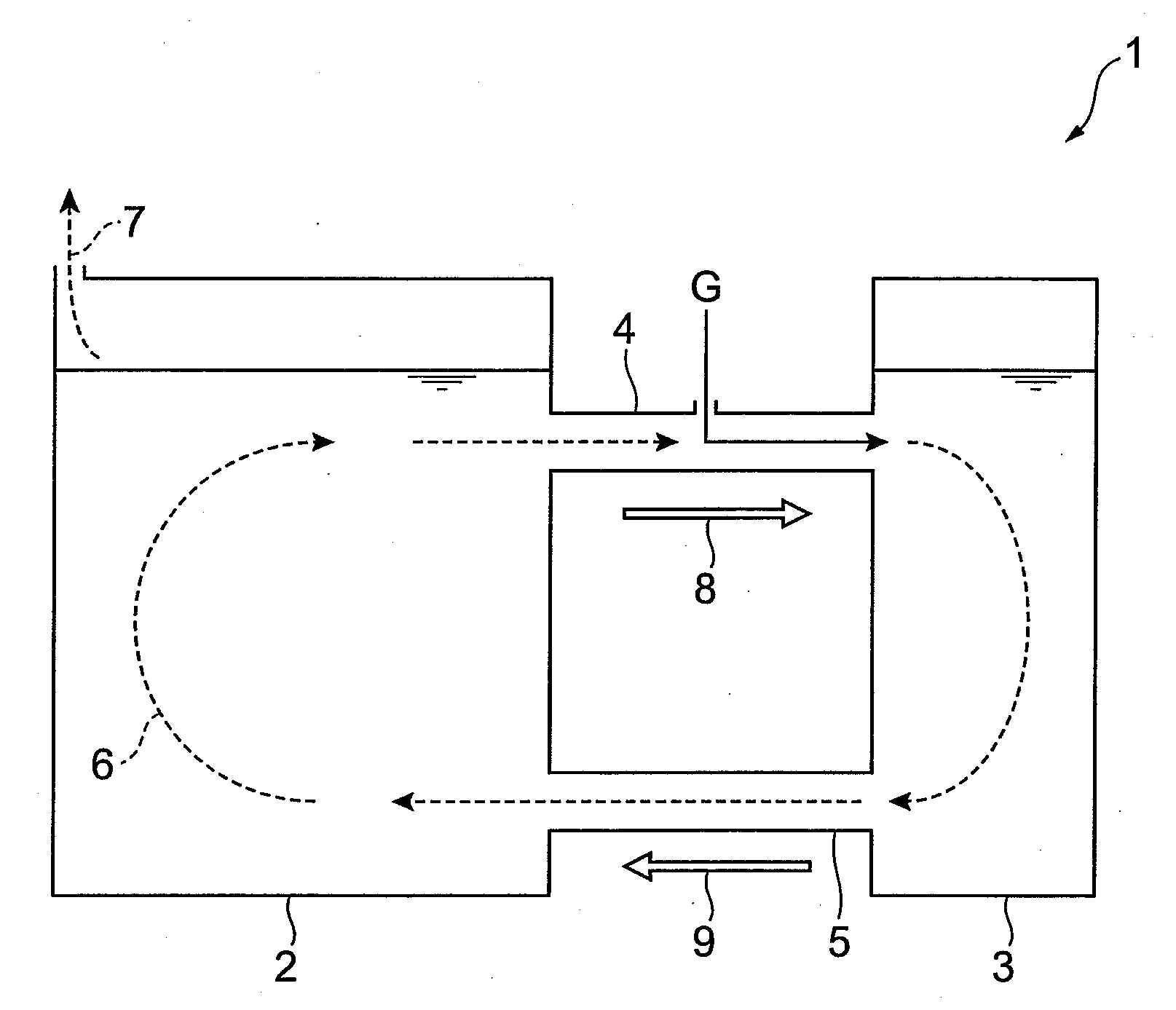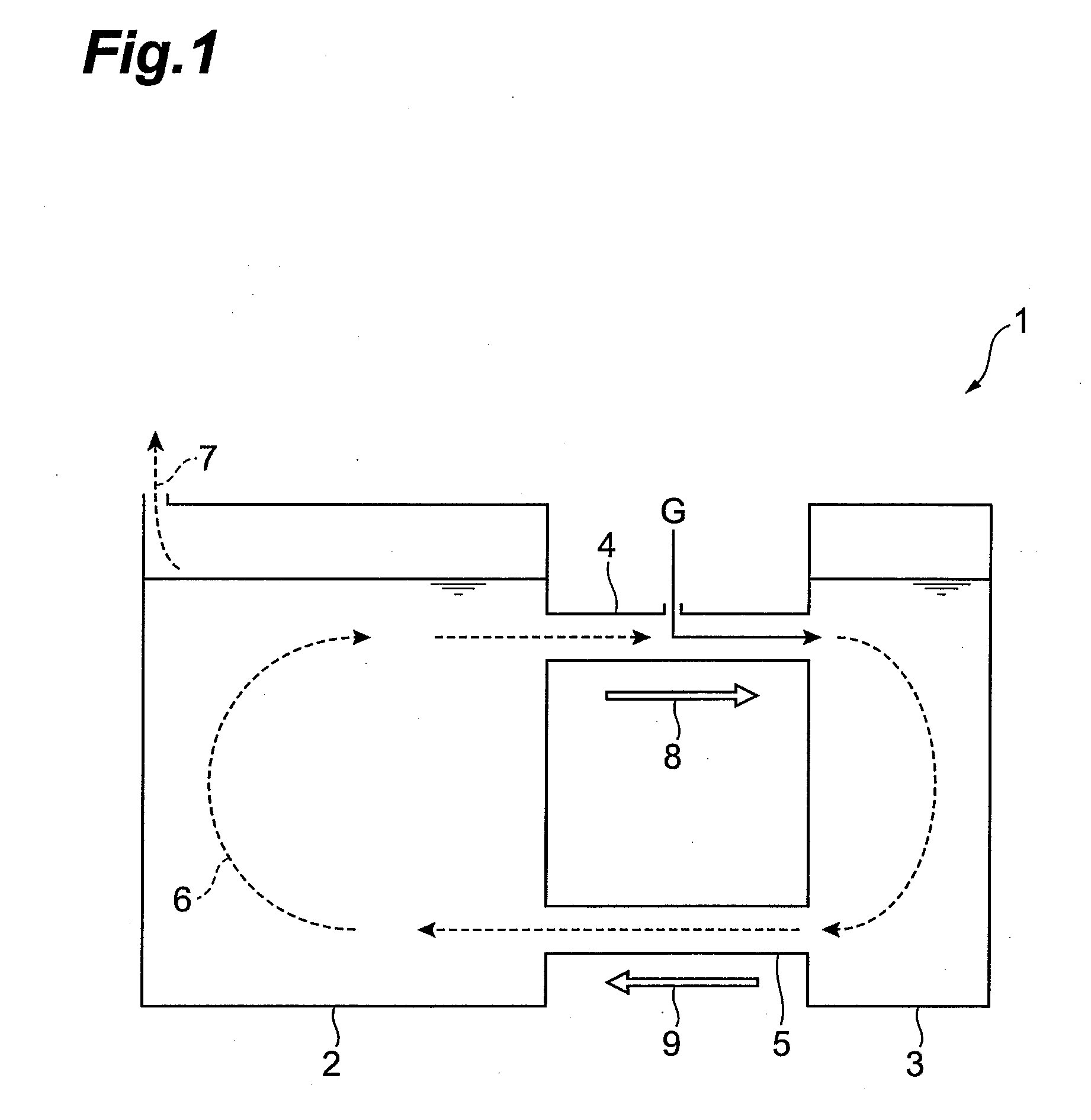Process for production of iron oxyhydroxide particles
a technology of iron oxyhydroxide and particle, which is applied in the direction of nickel oxide/hydroxide, iron compounds, nickel compounds, etc., can solve the problems of accelerating the oxidation rate of ferrous hydroxide, and achieve excellent magnetic shape anisotropy, low size variation, and high recording density.
- Summary
- Abstract
- Description
- Claims
- Application Information
AI Technical Summary
Benefits of technology
Problems solved by technology
Method used
Image
Examples
example 1
[0058]An iron sulfate aqueous solution was prepared using iron sulfate heptahydrate (FeSO4.7H2O) as the ferrous salt for the iron starting material. Sodium hydrogencarbonate (NaHCO3) was then added as a neutralizer to ion-exchanged water. The neutralizer was added at 4 equivalents to the iron starting material. Sodium hydroxide (NaOH) was then mixed therewith to obtain an alkali aqueous solution. Mixture of the iron starting material solution and the neutralizer solution was adjusted for an Fe concentration of 0.05 mol / L in the reaction mixture. A microbubble generator (MICROBUBBLER Z, product of Zenken Corp.) was used to generate nitrogen gas microbubbles, and after deaeration and mixing, an FeSO4 aqueous solution was added thereto for neutralization and precipitation to obtain a suspension (step (A)). The liquid temperature during and after neutralization was controlled to a constant 17° C.
[0059]The mixing was followed next by step (B). Oxygen-containing gas with an oxygen compone...
example 2
[0061]Iron oxyhydroxide particles were obtained in the same manner as Example 1, except that in step B, the iron(II) in the suspension was oxidized with an oxygen component ratio of 0.10, an oxygen-containing gas flow rate of 12 L / min and a bubble diameter of 150 μm. The reaction mixture volume was 100 L.
[0062]The obtained iron oxyhydroxide particles were measured in the same manner as Example 1. The results are shown in Table 1.
example 3
[0063]Iron oxyhydroxide particles were obtained in the same manner as Example 1, except that in step (B), the iron(II) in the suspension was oxidized with an oxygen component ratio of 0.15, an oxygen-containing gas flow rate of 2 L / min and a bubble diameter of 46 μm.
[0064]The obtained iron oxyhydroxide particles were measured in the same manner as Example 1. The results are shown in Table 1.
PUM
| Property | Measurement | Unit |
|---|---|---|
| Temperature | aaaaa | aaaaa |
| Fraction | aaaaa | aaaaa |
| Length | aaaaa | aaaaa |
Abstract
Description
Claims
Application Information
 Login to View More
Login to View More - R&D
- Intellectual Property
- Life Sciences
- Materials
- Tech Scout
- Unparalleled Data Quality
- Higher Quality Content
- 60% Fewer Hallucinations
Browse by: Latest US Patents, China's latest patents, Technical Efficacy Thesaurus, Application Domain, Technology Topic, Popular Technical Reports.
© 2025 PatSnap. All rights reserved.Legal|Privacy policy|Modern Slavery Act Transparency Statement|Sitemap|About US| Contact US: help@patsnap.com


